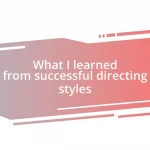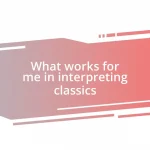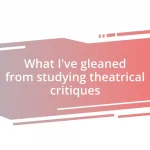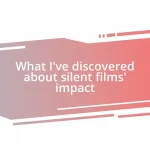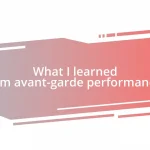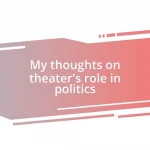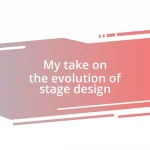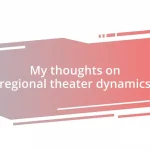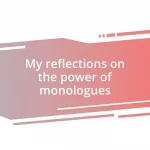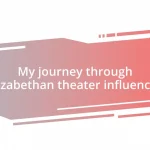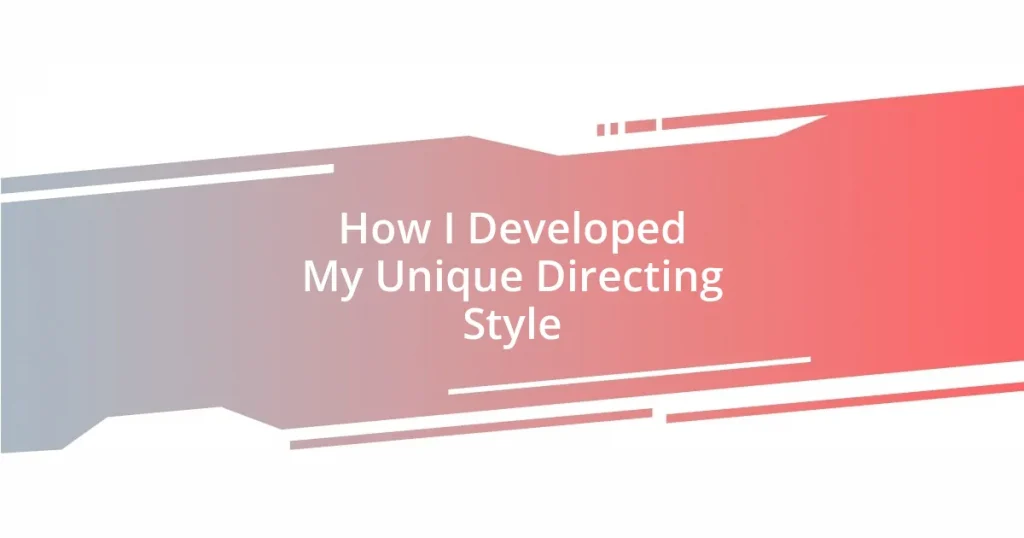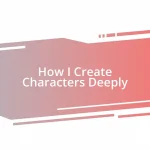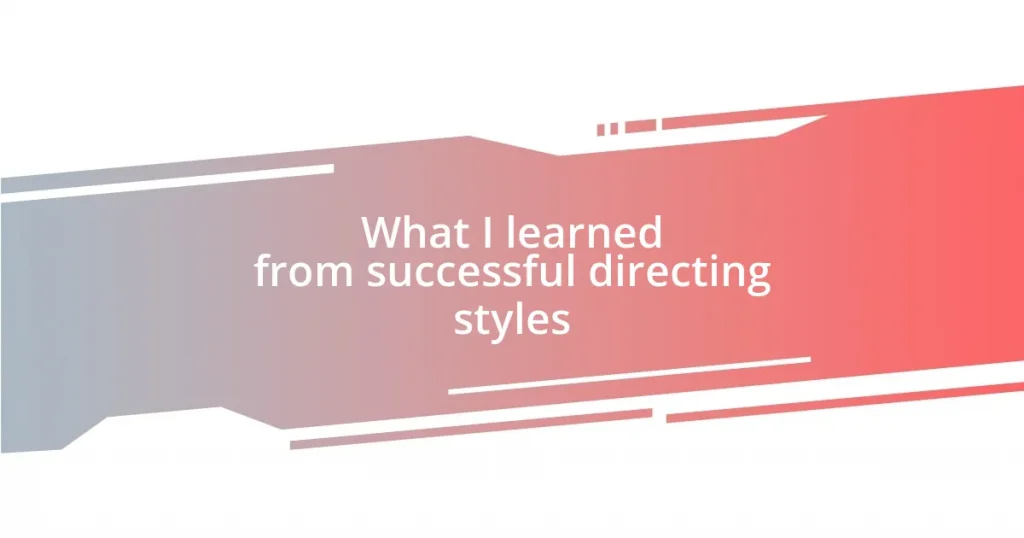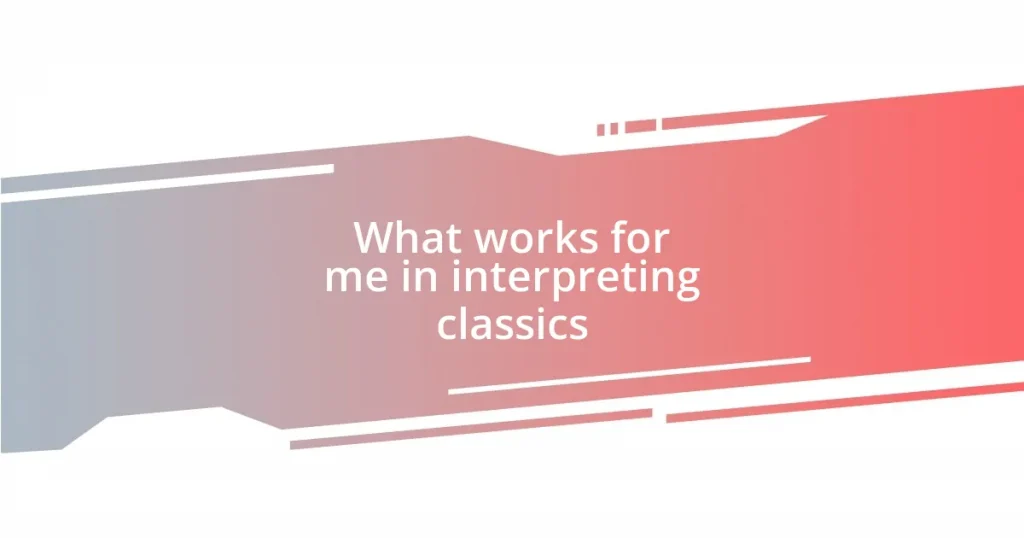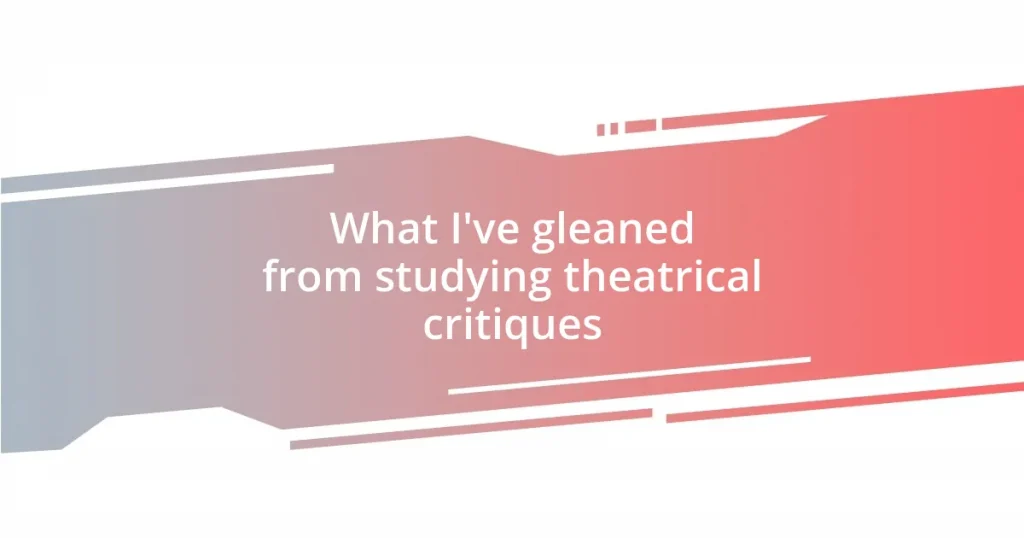Key takeaways:
- Initial experiences, like high school projects, can ignite a passion for storytelling and directing.
- Key directing techniques include establishing a strong vision, fostering a safe environment for actors, and prioritizing the editing process.
- Embracing vulnerability and feedback can lead to genuine connections and personal growth in filmmaking.
- Continuous adaptation and collaboration with diverse voices enhance the richness of storytelling and directorial style.
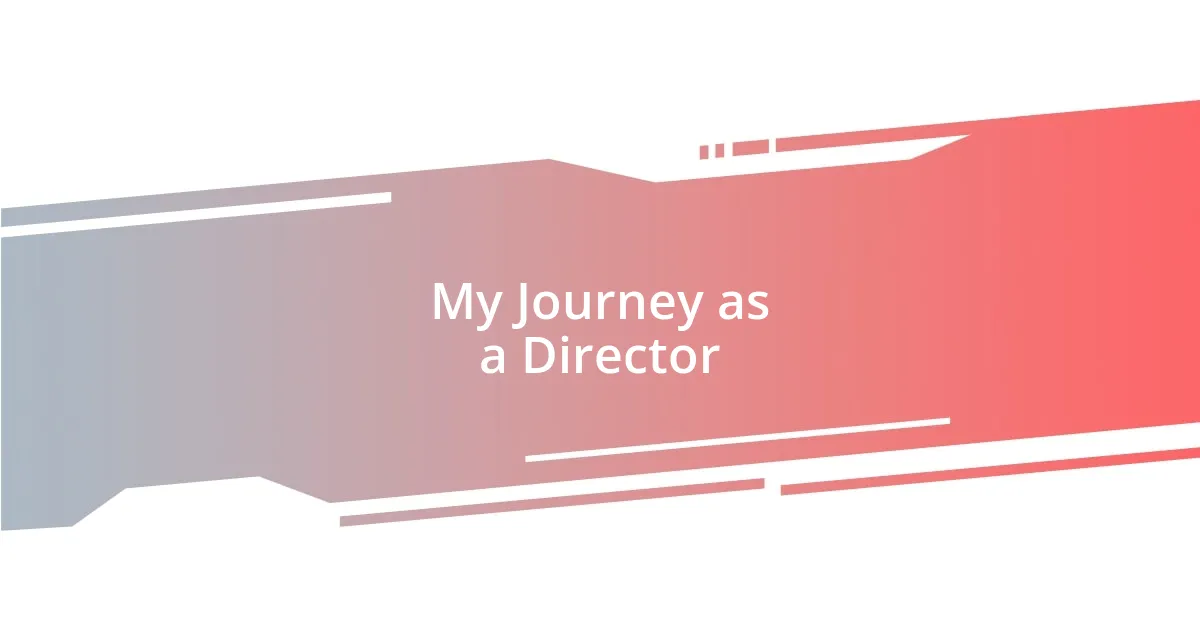
My Journey as a Director
I remember the first time I stood behind a camera; it was a high school project that felt monumental. That simple assignment sparked something in me—an undeniable urge to tell stories visually. I often wonder: how many directors can trace their passion back to a moment just like this?
As I progressed through college, I became fascinated by the concept of visual storytelling. I’ll never forget a particularly rough rehearsal when an actor broke down in tears; their vulnerability shifted my perspective. It made me realize directing isn’t just about the script or the shot—it’s about eliciting emotion and connecting with the audience. Have you ever had a moment where everything clicked into place, making you feel like you were meant to be doing something?
Each production taught me valuable lessons, from the logistical challenges of organizing a crew to the delicate art of managing diverse personalities. There was a time when I nearly lost my lead actor due to creative differences, and that experience forced me to really listen instead of just directing. It was a humbling reminder that collaboration often leads to the best outcomes. Isn’t it fascinating how every setback can become a catalyst for growth?
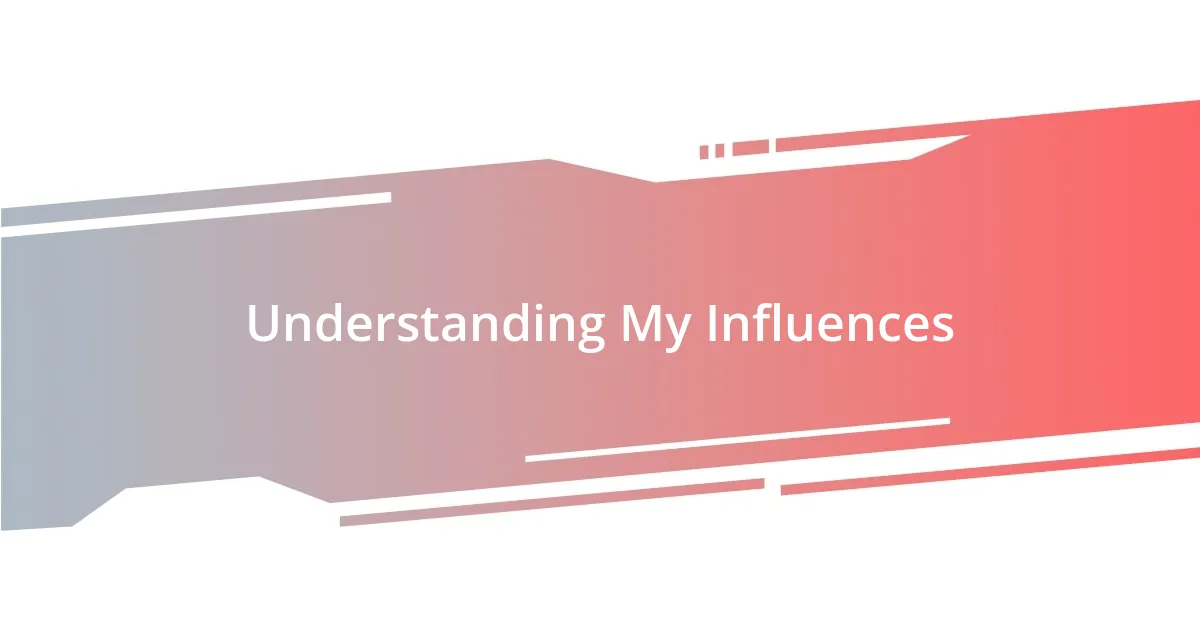
Understanding My Influences
Understanding my influences has been a journey in itself. I grew up watching classic films and was captivated by masters like Alfred Hitchcock and Akira Kurosawa. Their ability to convey suspense and emotion through visuals set the stage for my own understanding of film. One of my favorite memories is watching “The Seven Samurai” for the first time; the way Kurosawa crafted each character’s arc was nothing short of mesmerizing. It made me appreciate the depth and nuance that storytelling could achieve.
Here are some key influences that shaped my directing style:
- Film Legends: Hitchcock’s suspenseful storytelling and Kurosawa’s character development.
- Theatre Experience: My involvement in local theatre taught me the importance of live emotion and spontaneity in performances.
- Personal Triumphs and Challenges: My own life experiences, including overcoming stage fright, showed me how vulnerability can resonate with audiences.
- Collaborative Projects: Working with diverse teams helped me embrace different perspectives in storytelling.
- Mentorship: Guidance from seasoned directors revealed practical insights that transformed my approach to direction.
These influences intertwined to create a tapestry of perspectives that continues to inspire me in my work.
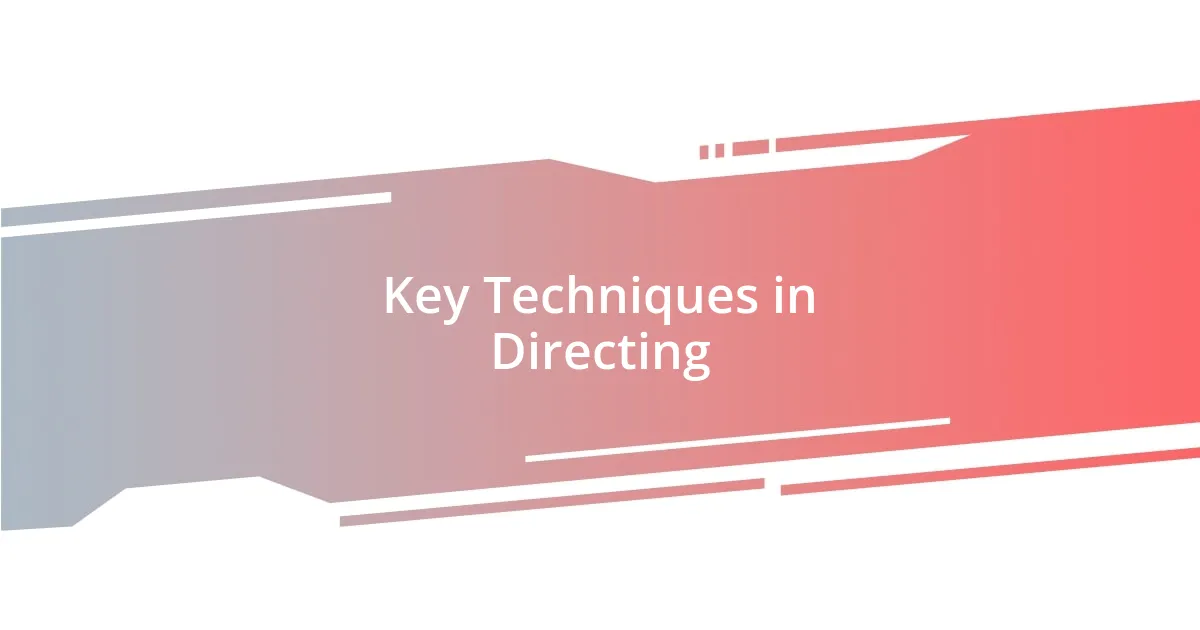
Key Techniques in Directing
In directing, I find that establishing a strong vision is crucial. It’s not merely about the words on the page; it’s about how those words come to life through visuals, pacing, and emotion. During a recent project, I used storyboards to map out scenes, and it provided clarity that enriched our creative discussions. This technique allows me to communicate my vision with the team effectively while staying open to their creative input.
Another key technique is fostering a safe environment for actors. I remember a particularly tense scene where emotions ran high. I encouraged the actors to take risks, share their interpretations, and express their fears. This openness led to a performance that was raw and genuine. Isn’t it incredible how vulnerability can elevate storytelling?
I also prioritize the power of editing in my directing process. After capturing all the performances, I often revisit those moments, diving deep into the footage. I relish the opportunity to see how each piece fits into the larger puzzle. I once spent an entire weekend editing a ten-minute scene, and the transformation from rough cuts to polished frames was nothing short of exhilarating. It reminded me that directing extends beyond the set; it’s a journey of continuous refinement and discovery.
| Technique | Description |
|---|---|
| Establishing a Strong Vision | Creating detailed storyboards to effectively communicate artistic direction. |
| Fostering a Safe Environment | Encouraging actors to explore their characters freely, promoting vulnerability. |
| Prioritizing Editing | Refining raw footage to craft a compelling narrative and enhance emotional impact. |
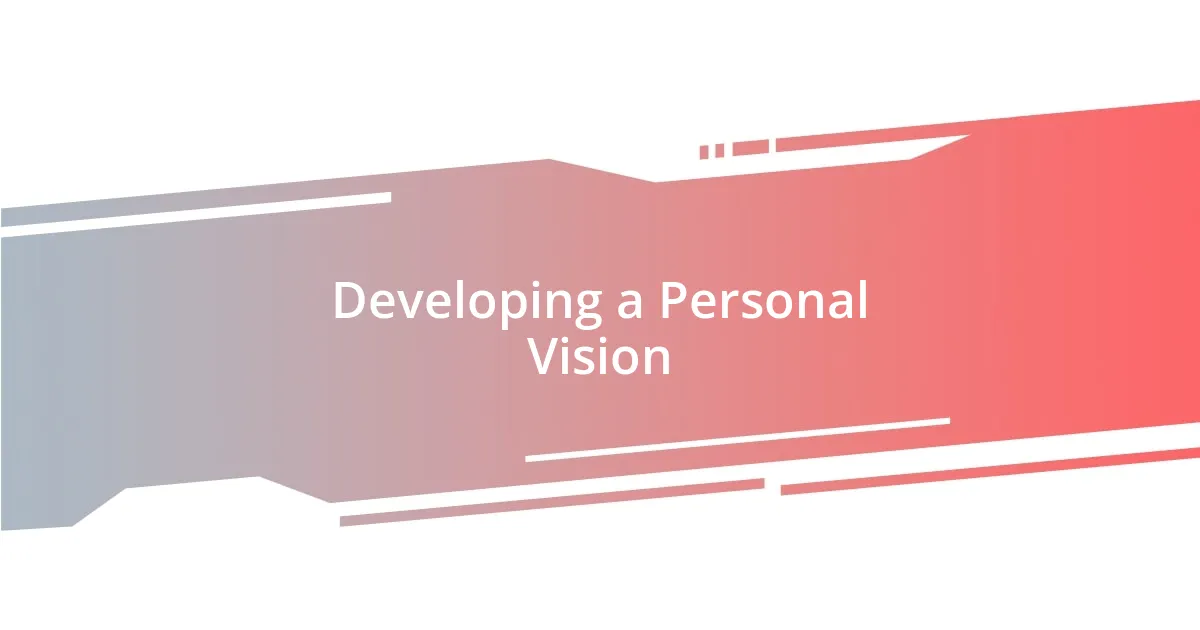
Developing a Personal Vision
Developing a personal vision as a director is about blending inspiration with authenticity. I recall a moment during rehearsals for my first independent film, where I felt completely lost. I realized that my voice was getting overshadowed by external influences. It was during a quiet night, staring at the stars, that I understood the importance of staying true to my unique perspective. Isn’t it funny how clarity often strikes when you least expect it?
I find that embracing vulnerability significantly enriches my vision. In one project, I shared a personal story about overcoming a creative block with my team. This openness not only deepened our connection but also inspired everyone to infuse their personal experiences into their respective roles. When we allow our vulnerabilities to lead the way, the resulting performances can be profoundly moving and relatable.
So, how does one actually cultivate that vision? For me, it involves constant reflection and experimentation. I often set aside time to immerse myself in different art forms, whether it’s painting, music, or literature. Each time I engage with a new medium, it adds layers to my understanding of storytelling. Have you ever noticed how a single book or song can completely reshape your perspective on life? It’s in these moments of exploration that I truly begin to see the world through my lens, igniting my passion for directing anew.
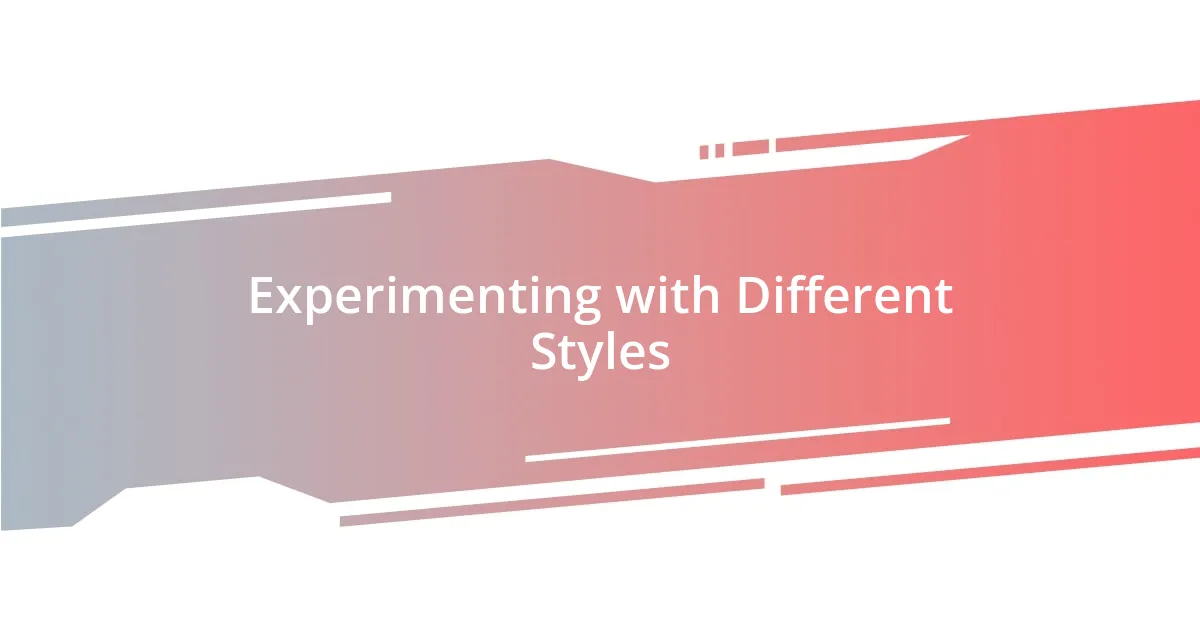
Experimenting with Different Styles
When I started my journey in directing, I was eager to explore various styles. One memorable experience was when I decided to experiment with a documentary approach for a short film. I left behind strict scripts and allowed raw, unscripted moments to unfold. Watching how real emotions seeped into the narrative opened my eyes to the beauty of authenticity in storytelling. Have you ever witnessed a moment that just feels right? Those snippets often hold a magic that can’t be captured through rehearsed lines.
In another instance, I tried my hand at a highly stylized, surreal project. It was challenging but liberating to use unconventional techniques like exaggerated colors and distorted camera angles to convey emotion. I vividly recall one scene where a character’s turmoil was depicted through swirling visuals and rhythmic cuts. The end result felt like stepping into a dream—a chaotic yet cathartic experience. Does art not often reflect the complexity of our emotions?
Gradually, I integrated lessons from these experiments into my unique style. I began to recognize that each exploration, even if it initially felt jarring, contributed to my growth as a director. Whether it was through documentary realism or surrealism, every project was a stepping stone. Don’t you think that every director has a treasure trove of past experiments that shape their current vision? It’s in those eclectic experiences that I found the threads weaving my distinctive voice.
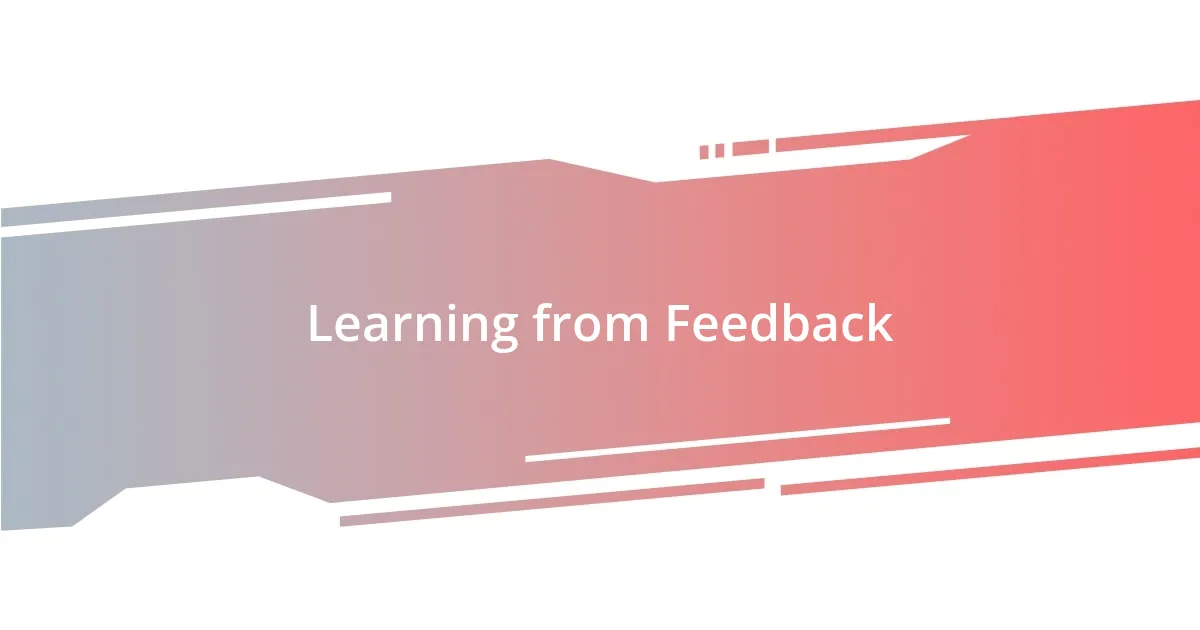
Learning from Feedback
Receiving feedback has been one of the most transformative aspects of my directing journey. I remember after one screening, a couple of audience members approached me, expressing how a particular scene resonated with them on a personal level. Their emotional reactions taught me that my intention as a director often extends beyond the screen. Isn’t it fascinating how our art can touch lives in ways we never anticipated?
I’ve also realized that constructive criticism, though sometimes tough to hear, is a vital ingredient for growth. In one of my earlier projects, a mentor suggested that I focus less on directing the actors and more on guiding their emotional journeys. At first, I felt defensive, but after some reflection, I understood the value in shifting my approach. Have you ever paused to consider how that one piece of feedback could pivot your entire strategy?
Incorporating feedback has been an evolving process, often leading to unexpected breakthroughs. During production of my latest film, I set up casual ‘feedback sessions’ with my cast and crew after rehearsals. The insights offered in those relaxed environments frequently led to creative solutions I hadn’t considered. Could it be that genuine dialogue is the key to unlocking deeper connections in storytelling? Through these interactions, I’ve come to appreciate how collaboration enriches my directing style, making it a constantly evolving tapestry of shared experiences.
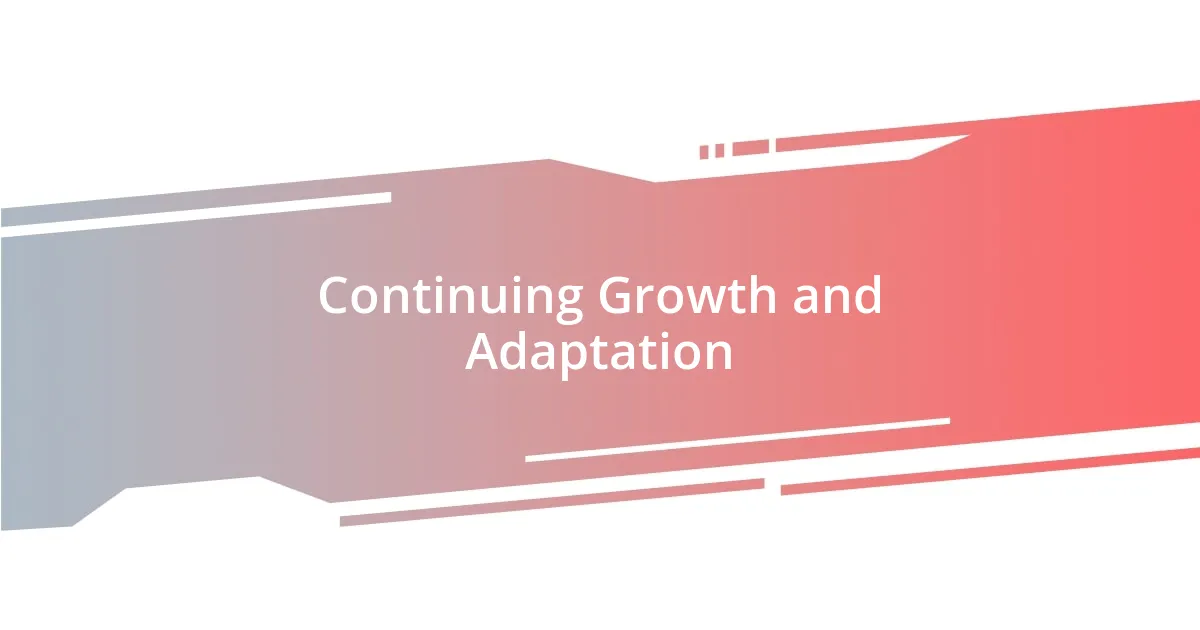
Continuing Growth and Adaptation
Continuing growth as a director is like nurturing a plant; it requires both attention and room to breathe. I recall a specific moment during my work on a stage production when an unexpected technical malfunction occurred right before the main performance. Instead of panicking, I chose to embrace it, inviting the actors to improvise and infuse their character’s personalities into the chaos. This not only salvaged the performance but revealed a side of my creativity that I hadn’t fully tapped into. Have you ever noticed how challenges can become your greatest teachers?
Adaptation, for me, isn’t just about changing methodologies; it’s about evolving emotionally as well. When I collaborated with a diverse group of actors from different cultural backgrounds, I felt an initial pang of insecurity about my own experiences. However, as I opened myself up to their stories, I realized that every voice added a nuanced layer to the narrative. This experience challenged my own perspectives and encouraged me to embrace vulnerability. Isn’t it interesting how stepping outside our comfort zones can reshape our creative instincts?
As I progress in my directing career, I find myself leaning more into collaboration and exploration. Each project serves as an opportunity to learn something new—whether it’s about storytelling, character development, or even my approach to conflict resolution on set. I remember a shoot where we had to adapt our entire shooting schedule due to sudden weather changes. Rather than adhering to a rigid plan, we allowed spontaneity to guide us, leading to some of the most breathtaking visual moments in the film. Isn’t it remarkable how sometimes the most beautiful outcomes arise from unexpected shifts in direction?
